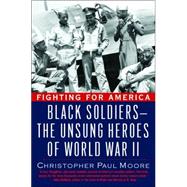
| AUTHOR'S NOTE | XIII | ||||
| PROLOGUE | XVII | ||||
|
3 | (28) | |||
|
31 | (22) | |||
|
53 | (20) | |||
|
73 | (12) | |||
|
85 | (10) | |||
|
95 | (10) | |||
|
105 | (6) | |||
|
111 | (10) | |||
|
121 | (14) | |||
| 10. THE FIGHTING 99TH [1943] | 135 | (12) | |||
| 11. THE LONG, HOT SUMMER [1943] | 147 | (14) | |||
| 12. FIGHTERS OVER ANZIO [1944] | 161 | (8) | |||
| 13. LANDING IN ENGLAND [1944] | 169 | (6) | |||
| 14. D-DAY [1940] | 175 | (12) | |||
| 15. RED BALL EXPRESS [1940] | 187 | (8) | |||
| 16. SOUND OFF! [1944] | 195 | (6) | |||
| 17. PORT CHICAGO MUTINY [1944] | 201 | (10) | |||
| 18. TWO TRIALS AND TWO GENERALS [1944] | 211 | (12) | |||
| 19. ISLAND TO ISLAND [1940] | 223 | (36) | |||
| 20. BATTLE OF THE BULGE: HITLER'S LAST CHARGE [1944-45] | |||||
| 21. THE FORGOTTEN FRONT: RETURN OF THE BUFFALO SOLDIERS [1944-45] | 259 | (20) | |||
| 22. CAPTIVES OF WAR [1945] | 279 | (10) | |||
| 23. WACs OVERSEAS [1945] | 289 | (6) | |||
| 24. THE HOLOCAUST [1945] | 295 | (20) | |||
| 25. VICTORY [1945] | 315 | (10) | |||
| EPILOGUE | 325 | (17) | |||
| MAPS | 342 | (3) | |||
| APPENDIX | 345 | (12) | |||
| ILLUSTRATION CREDITS | 357 | (2) | |||
| INDEX | 359 |
The New copy of this book will include any supplemental materials advertised. Please check the title of the book to determine if it should include any access cards, study guides, lab manuals, CDs, etc.
The Used, Rental and eBook copies of this book are not guaranteed to include any supplemental materials. Typically, only the book itself is included. This is true even if the title states it includes any access cards, study guides, lab manuals, CDs, etc.
Excerpted from Fighting for America: Black Soldiers-the Unsung Heroes of World War II by Christopher Paul Moore
All rights reserved by the original copyright owners. Excerpts are provided for display purposes only and may not be reproduced, reprinted or distributed without the written permission of the publisher.